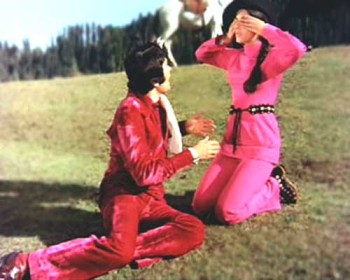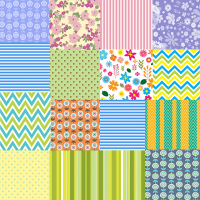by Chandramohan Nair
When I look back at my sartorial journey over the past three score years, I feel rather embarrassed writing about it. I have no riveting stories of getting swept away by some inexorable fashion tide or of experimenting with a melange of styles. What I can share with you, instead, is a simple philosophy which has served me well all these years.
Right upto my high school days, I paid little attention to fashion trends. I was happy as long as my clothes were functional, comfortable and adhering to my own aesthetic instincts: for example, I preferred cotton shirts in light shades of blue and trousers in dark colours . And I liked understated elegance and hence, was not particularly fond of adornments like lapels and flaps. My school uniforms – white cotton shirts and black trousers – met most of my basic requirements and I was quite happy wearing them.
At that time, in Kerala, one underwent a two-year pre-degree course, after clearing the class ten board examination. This was equivalent to the current Plus Two system but the big difference was that the pre-degree course was conducted in colleges – where students enjoyed considerable freedom.
The college that I joined was a venerable government institution, in Trivandrum, which was housed in an elegant red-and-white colonial era structure. There were no uniforms and attendance norms were liberal. After the confines of school life, this freedom was quite heady and, not surprisingly, found expression in the manner the students dressed.
Although an all-male college, fashion was in full bloom in the campus, especially in the matter of shirts. There were floral and abstract designs in a variety of fabrics and colour combinations. Hibiscus flower designs and psychedelic prints were favoured by those who really wanted to stand out. Students dreaming of a career in the armed forces went in for smart khaki shirts with lapels and double pockets. The more conservative ones wore checks and stripes. Collars came in all sizes and shapes while buttons were used in many creative ways.
Personally, I would not have minded wearing my comfortable black and white school uniform for another two years till I enrolled for my degree course. But I did not want to risk becoming the target of a social boycott by my friends. And I must confess that I found some of the outfits being worn in college quite attractive and decided to infuse a bit of sparkle into my own wardrobe.
In those days, readymade clothes were not in vogue and we had to purchase the shirt or trouser material and get them stitched. The Overbridge locality, close to the railway station, used to be the main centre for fabrics and textiles and we would make a beeline to the many showrooms in the area.
It was a kind and perceptive old salesman at one of these outlets who gave me some invaluable advice which I have diligently followed ever since. I was, then, about as tall as my hero Sunil Gavaskar and salvation seemed to lie only in elevator shoes. The salesman gave me a once-over and said “Son, always stick to vertical stripes for your shirts, that will make you look taller”. He then expertly draped two shirt pieces – one with vertical stripes and the other with horizontal – over my shoulders to illustrate his point. This was to be the start of my life-long accumulation of vertically striped shirts.
An exception I made to this rule, succumbing to peer pressure, was in the choice of a crimson shirt filled with navy-blue Rorschach patterns. I was quite attached to this shirt and wore it as often as possible. I used to roam around town quite a lotduring those days and many passersby may have unwittingly taken my walking psychoanalysis test.
I also got myself stitched two pairs of drain-pipes. These required Houdini style contortions, both to get into and get out of, and were most uncomfortable to wear in the warm and humid Kerala climate. But then, what was a little bit of discomfort if it enhanced your style quotient? Little did I realize then, that these were going to be the last couple of years for drain-pipes to be in the vanguard. The release of the wildly popular movie Bobby in 1973 would signal the beginning of a decade long dominance of bell bottoms.
One’s choice of tailor was often the X factor that would determine whether one would end up looking cool and debonair or remain the boring guy next door. There were a handful of tailors who had acquired a near-mythical reputation and there would be at least a month’s wait to get your clothes made at these places. My favourite was Western Tailors located close to the beautiful St. Joseph’s Cathedral in the heart of the city.
A visit to Western Tailors would be preceded by days spent agonising over momentous choices such as whether to go for a soft or a hard collar, whether the shirt pockets should have flaps and, if so, whether the flaps should have buttons. Other vexing questions reserved for discussion with the Master tailor would revolve around the merits or otherwise of having a box pleat run down the back of your shirt and the precise length of the shirt if it was going to be worn tucked out.
Thankfully, I was clearer on my trouser options: two-inch belt loops, two back pockets without flaps but with buttons, a single pleat in the front, one inside hip pocket, no trouser cuffs and last but not the least, a reliable zip.
During my engineering college days, post the Bobby phenomenon, the excitement was mostly around the size of your flares. I never dared to venture beyond 22 inches keeping in mind my Napoleonic stature, but for many of my friends that would not have even counted as a bell bottom. Otherwise, college life was quite uneventful for me from a fashion perspective, as I had my hands full coping with the rigours of an engineering course.
My working career saw me revert, with a vengeance, to my time-tested formula of wearing functional but comfortable clothes. My work clothes tended to be formal, even on dress-down days, as I found myself to be much more focused and productive in these. I would have been terribly disoriented in a 24/7 always-available work culture, with no distinction made between home and office.
At work, I mostly wore white or light blue shirts with black or dark blue trousers. So much so that my neighbours used to pity me for working all my life for companies that insisted on uniforms. The only indulgence I permitted myself was in the matter of ties where my choice of maroon neck-ties did raise a few eye-brows – appreciative, I thought – during business meetings.
At home, I stubbornly refused to wear shorts, cargos, chinos, tracks, jeans or kurtas. They never came close to my trusted mundu or lungi, in terms of comfort or practicality, when faced with sweltering summers or pouring monsoon seasons.
So, here I am now, in retirement, completely free of any workplace norms or peer pressure in the matter of dressing up or dressing down.
People tell me that clothes are a reflection of one’s personality and looking at my sartorial choices, over the years, they conclude that I am a dyed-in-the-wool conformist. I find this rather amusing as I always thought that conformists were those who jumped unthinkingly on the fashion bandwagon while I always appeared to be taking the road less travelled.
And this feeling gets increasingly reinforced these days, when I attend a function or visit a public place, wearing my favourite striped shirt along with a well starched double mundu, and find that I am the cynosure of all eyes.
I wonder why, till I look at the men around me: men of all ages, sizes and shapes, but who all look so much alike with their Mohawk hairstyles, short trimmed beards, bold T-shirts and designer jeans. I could well have been from another planet.
So if anyone cares to listen, here’s my simple mantra for navigating the world of fashion: express yourself through clothes that are elegant but also functional and comfortable. Don’t follow the herd but, always, always follow your own aesthetic instincts.
Trust me, you can’t go wrong.
Pic from http://elle.in/blog/style-inspiration-rishi-kapoor/






